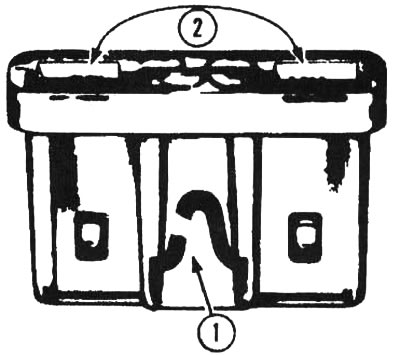
3.1. To access the fuse box located in the passenger compartment, remove the cover of the glove box
Each of the fuses provides protection for a specific electrical circuit; they can be identified by the designations presented on the fuse panel.
There are flat fuses in the fuse box; they are small in size and have knife-type contacts, which allows them to be removed and installed manually, without the use of special tools. If any electrical device fails, always check the integrity of the fuse first. A blown fuse is easy to spot thanks to the transparent plastic housing. Visually inspect each element of the fuse block for damage (see illustration). If a continuity test is required, connect the tester leads to the ends of the contacts in the fuse box.

3.3. To check the integrity of the fuse, remove it from the socket and visually inspect for a break (1) or, turning on the electrical circuit, attach the test lamp leads to the points indicated in the illustration (2)
When replacing a blown fuse, make sure the new one has the same designation and is rated for the same amount of current. The design of fuses designed for different currents is the same, therefore, when repairing an electrical circuit, fuses with exactly the same current value should be used. It is unacceptable to replace the fuse with another one designed for less or more current. The current value in amperes is indicated on the fuse body.
If a replacement fuse blows immediately, do not replace it until the cause of the fault has been identified and corrected. In most cases, this is caused by a short circuit in the circuit caused by a broken or damaged wire.
